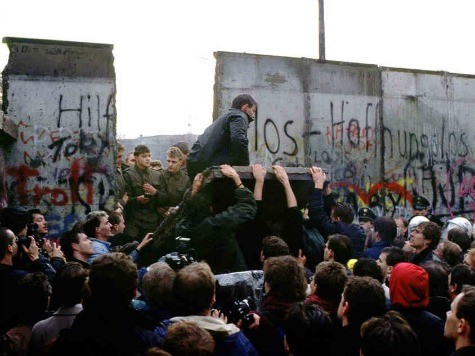
How could there be anything left to say about World War II and the Cold War that hasn’t been said already?
We know the narrative, start to finish. In researching my new book, American Betrayal: The Secret Assault on Our Nation’s Character (St. Martin’s Press), I was shocked to learn that’s not the same thing as understanding what really happened.
That probably won’t make sense until you find yourself, as I did, staring at the brick wall that somehow blocks the body of intelligence history from entering the general flow of the narrative we know so well. Bringing them together–intelligence history with general history–changes almost everything. It actually alters the course of history, and with plenty of applications for the post-9/11 age.
Any chronicle or biography of mid-to-late 20th century U.S. history that fails to acknowledge the post-USSR revelations of intelligence and FBI archives in Moscow and Washington is hemmed in by this same wall. Surprisingly, that describes almost every chronicle and biography on the shelf today.
What accounts for this, in effect, mass mental block? We might blame various constraints, including the absence of precedence. But what accounts for this absence of precedence? Here is where we encounter the conditioned reflex of the average, college-educated American.
Since the 1991 dissolution of the Soviet Union, the findings that confirm the secret Soviet penetration of U.S. institutions have uneasily co-existed with the old legacy of Soviet-fanned disinformation that tells us the “Red scare” was just a “Red-baiter’s” fantasy. It is this consensus that conditions us, for example, to sentence Sen. Joe McCarthy to burn in hellfire forever for Senate investigations into Communist penetration, but views a portrait of Chairman Mao by Warhol as just the thing for the chic mantelpiece. Never mind the 30 to 40 million people the Communist dictator killed.
Such mental conditioning may have ruptured our moral and logic processes. But it left the field wide open for some serious new revision.
Once-secret sources–among them, the Mitrokhin archive, the Venona archive, the Vassiliev archive, and declassified FBI files–reveal the Moscow-directed maneuvers of a strategically-placed intelligence army of American traitors fighting to advance Soviet interests. That’s not one Aldrich Ames or five Cambridge spies. Hundreds of American traitors operated surreptitiously in the public square, many of them entering government positions under FDR in the 1930s. Some, including the now-infamous White House aide Lauchlin Currie, Treasury official Harry Dexter White, and the State Department’s Alger Hiss, advanced within grasp of the levers of power. Under their shadowy hands, for example, Red China, the global monetary system, and the United Nations (among other “un-American” programs) took shape, hallmarks of our contemporary world.
Who was it that won the Cold War again?
It’s time to ask ourselves whether there might have been a point at which this mass of Soviet agents–once the red-hot point of contention between anti-Communists, who argued the agents existed, and “anti-anti-Communists,” who argued they didn’t–constituted a de facto “occupation.” If so, should we still regard American policy fostered in the “occupied” milieu as strictly “American”?
The same question goes for American war strategy, too–even “Good War” strategy. In thinking through the answers, claiming pure victory in WWII may become problematic. After all, at war’s end, one totalitarian monster–Hitler–was supplanted by another, even greater totalitarian monster–Stalin. Or maybe it was Stalin’s strategy that triumphed; not ours.
It is these troubling questions that American Betrayal mulls, armed with the findings of the archives, while always on the lookout for the many old clues that have been lost to us for decades.
The history that emerges is very different from the one we “know.”

COMMENTS
Please let us know if you're having issues with commenting.